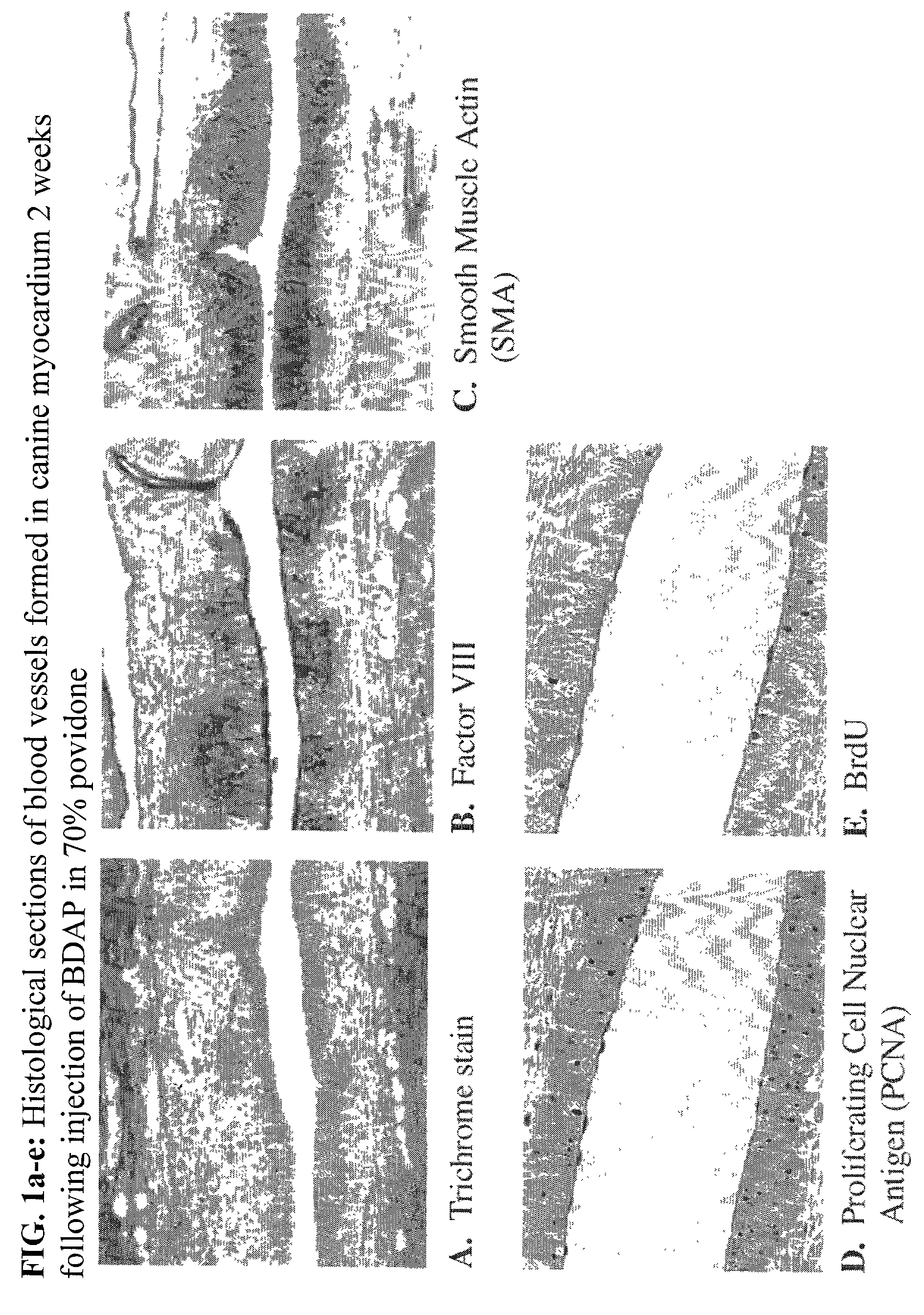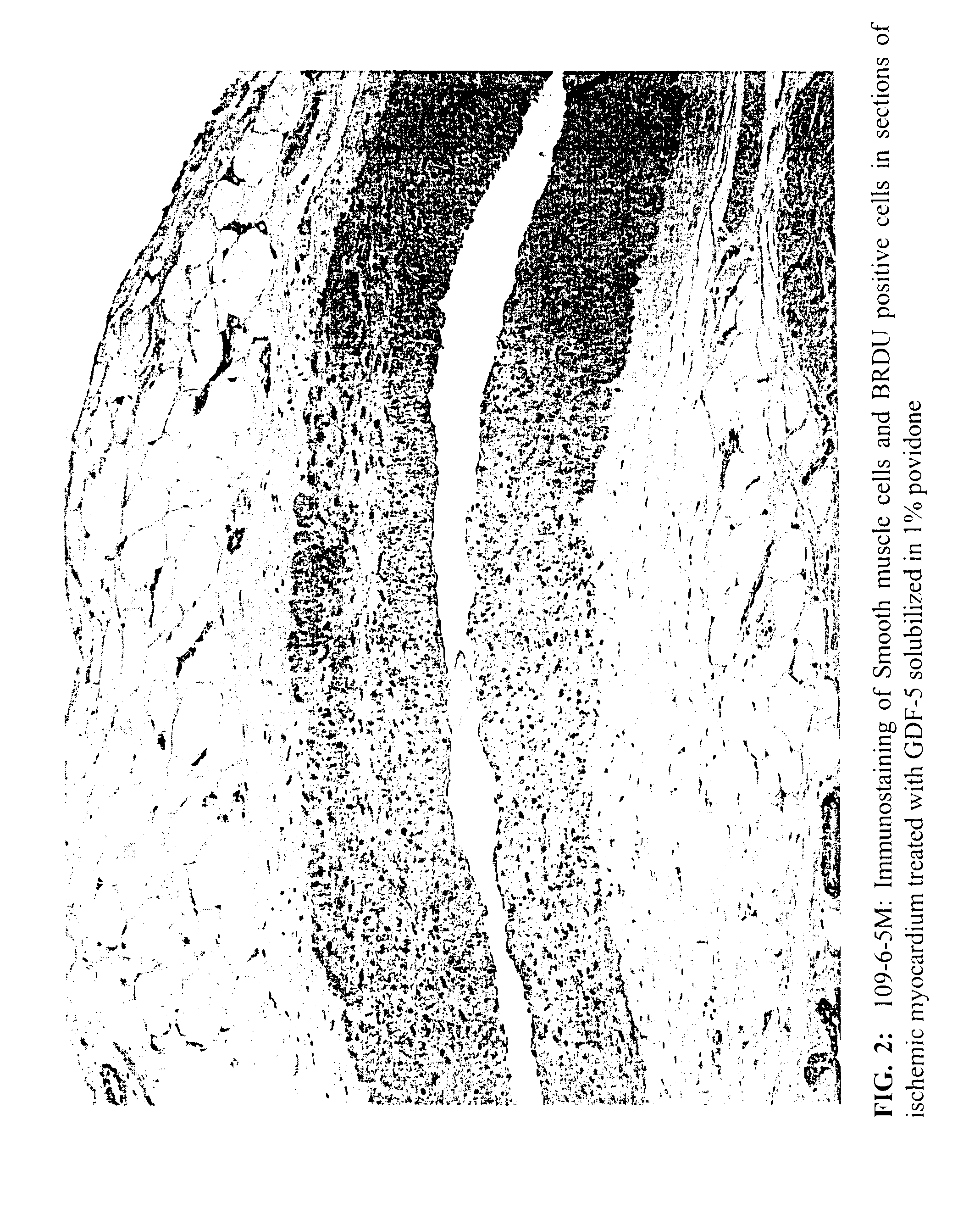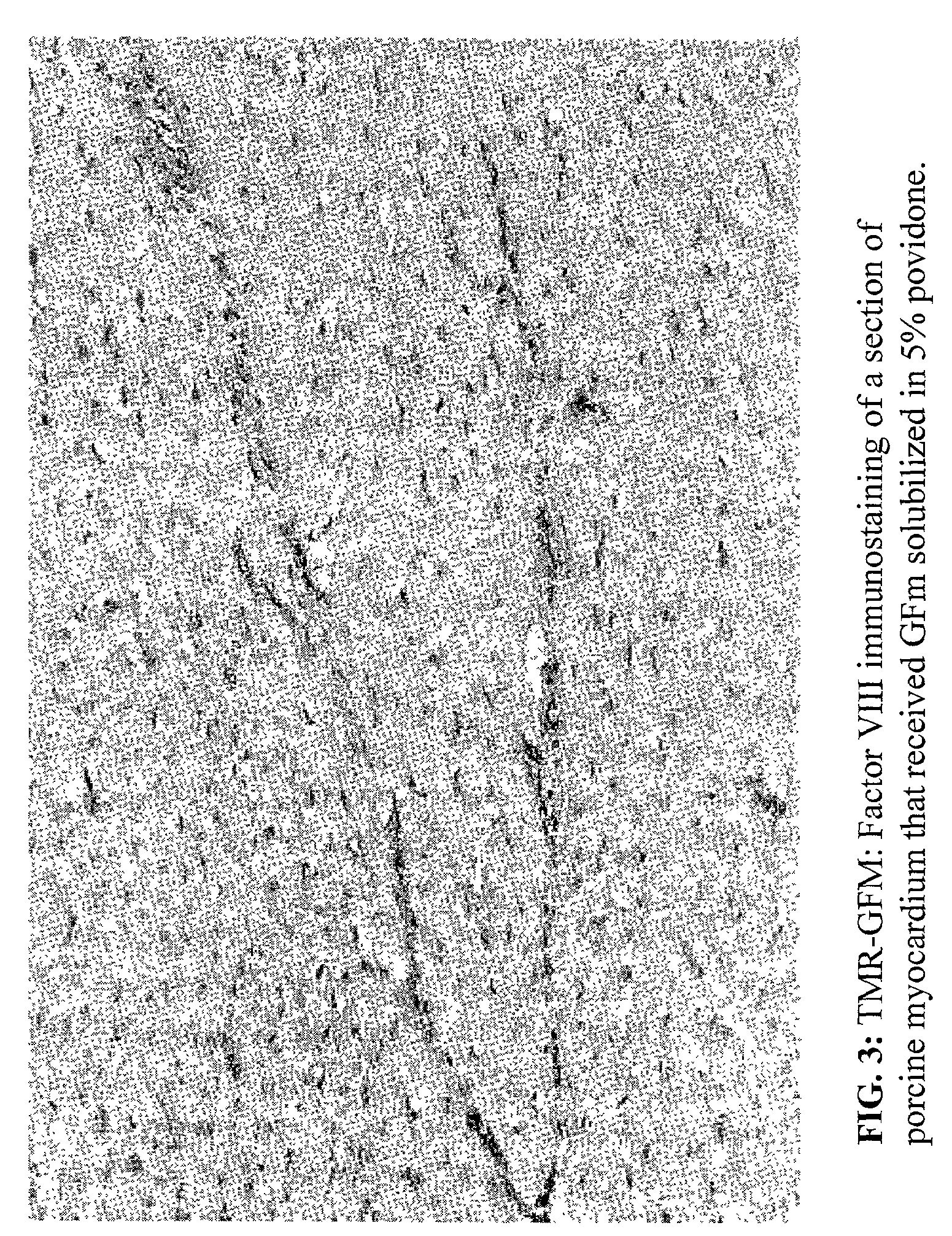Povidone-containing carriers for polypeptide growth factors
a technology of growth factor and povidone, which is applied in the direction of peptides, drug compositions, angiogenin, etc., can solve the problems of reducing blood flow, reducing blood flow, and reducing the ability of the vessel wall to expand and contract, so as to achieve good shelf stability and not cause significant injury or damage to cells.
- Summary
- Abstract
- Description
- Claims
- Application Information
AI Technical Summary
Benefits of technology
Problems solved by technology
Method used
Image
Examples
example 1
Canine Myocardial Angiogenesis Pilot Study
[0050]This example illustrates the efficacy of BDAP solubilized in a 70% aqueous povidone (K-90) solution in treating ischemic myocardial tissues.
[0051]Four adult mongrel dogs of either sex, weighing 21–26 kg, were anesthetized and a left thoracotomy performed through the fifth intercostal space. All visible epicardial collaterals connecting LAD artery diagonals to circumflex or right coronary arteries were ligated to minimize collateral flow to the LAD artery territory and an ameroid constrictor was placed on the proximal to the first diagonal branch. After completing the procedure, BDAP was applied to both the ischemic and non-ischemic left circumflex (LCX) coronary artery region in three different concentrations and using three different methods of application, for a total of nine injections in each region for each animal. Thus, 0, 10 or 100 μg BDAP was injected in 1) a 0.1 cc volume of 70% ISP Plasdone® povidone having a K value of about...
example 2
Large Scale Canine Myocardial Ischemia Study
[0054]This example illustrates the efficacy of various concentrations of BDAP in a 1% aqueous C-15 povidone solution in treating ischemic myocardial tissues.
[0055]The purpose of this study was to determine the effects of intramyocardial injections of Sulzer's Growth Factor mixture (GFm), BDAP, also known as ProVasc™. in a canine model of chronic myocardial ischemia. Thirty-eight (38) dogs underwent ameroid constrictor placement on the proximal LAD and ligation of visible epicardial vessels collateralizing the LAD territory. Three weeks later, during a second surgery, animals had intramyocardial injections of a 1% povidone (ISP Plasdone® C-15) solution containing either placebo, BDAP at a concentration of 1 μg / ml, or BDAP at a concentration of 10 μg / ml. Each injection consisted of 0.15 ml of treatment solution, and injections were made at a spatial density of ˜1 / cm2 over the LAD region. Group assignments were random and investigators were b...
example 3
Porcine Myocardial Ischemia Study
[0057]This example demonstrates the effectiveness of a solution of BDAP in 5% aqueous C-15 povidone at treating ischemic tissues using a porcine model.
[0058]Twelve pigs (mean body weight 73±4.6 kg) were included in the study. The animals were premedicated with ketaminol (10 mg / kg) and atropine (2 mg / kg) injected intramuscularly. A vascular access was established through a vein in the ear. The animals were anaesthetized with sodium thiopental (5 m / kg) through this venous line and were intubated, and anaesthesia was maintained by intravenous administration of thiopental as needed. The animals were ventilated with room air. A left lateral thorocotomy was performed through the fifth intercostal space. The pericardium was opened and reflected to form a cradle for suspending the heart. In all animals, five triads of laser channels were drilled at the mid-height of the left lateral wall. Within each triad, the channels were 1 cm apart. The external opening ...
PUM
| Property | Measurement | Unit |
|---|---|---|
| viscosity | aaaaa | aaaaa |
| viscosity | aaaaa | aaaaa |
| viscosity | aaaaa | aaaaa |
Abstract
Description
Claims
Application Information
 Login to View More
Login to View More - R&D
- Intellectual Property
- Life Sciences
- Materials
- Tech Scout
- Unparalleled Data Quality
- Higher Quality Content
- 60% Fewer Hallucinations
Browse by: Latest US Patents, China's latest patents, Technical Efficacy Thesaurus, Application Domain, Technology Topic, Popular Technical Reports.
© 2025 PatSnap. All rights reserved.Legal|Privacy policy|Modern Slavery Act Transparency Statement|Sitemap|About US| Contact US: help@patsnap.com



